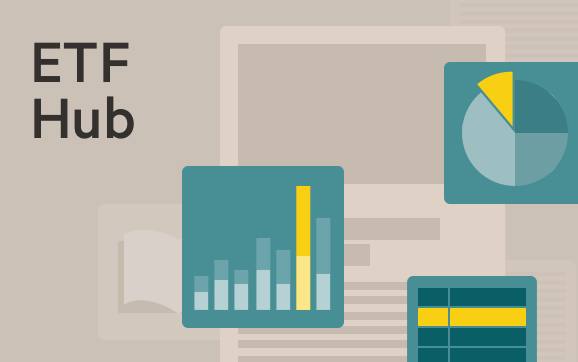[ad_1]
Receive free Exchange traded funds updates
We’ll send you a myFT Daily Digest email rounding up the latest Exchange traded funds news every morning.
Latest news on ETFs
Visit our ETF Hub to find out more and to explore our in-depth data and comparison tools
The appetite for equity exposure may have faltered in Europe in the first half, but the picture is markedly different for some bonds.
While inflation-linked bond funds have admittedly failed to attract much interest, fixed-income exchange traded funds in aggregate took in €15.9bn in the second quarter, up slightly from €15.1bn in the first three months — a record level of demand.
“Flows into bond ETFs reached an all-time high in the first half of the year as investors sought to benefit from increasing bond yields and redress imbalances in portfolios, which have been underweighted in fixed income for many years,” said Morningstar.
The yields on developed market government bonds that many investors consider to be risk-free are now pretty tempting, and this seems to have had an influence on the types of bond funds that are in high demand.

This article was previously published by Investors Chronicle, a title owned by the FT Group.
Investors have favoured ETFs buying government and investment-grade bonds — the latter being the most defensive form of corporate debt. And the yields of some of the most popular bond ETFs during Q2 look enticing.
The iShares $ Treasury Bond 7-10 Year Ucits ETF (IBTM) had a 12-month trailing yield of 2.6 per cent on 12 July, but this is a backward-looking figure that is unlikely to reflect the full extent of further yield rises in recent months. That said, the most popular fund, the iShares Core € Corporate Bond Ucits ETF (IEBC), had a more modest trailing yield of 1.6 per cent.
What is interesting is how ETF investors appear to be positioned in relation to duration, or a bond’s sensitivity to changes in interest rates.
“The flows picture indicates that investors are increasingly favouring the middle area (five to 10 years) because of their expectations of the evolution of the interest rate cycle,” said Jose Garcia-Zarate, associate director for passive strategies research at Morningstar. “Several of the Morningstar bond categories experiencing outflows in the second quarter were [focused on] short-term-maturities and inflation-linked bonds,” he said, adding that although central banks were still in tightening mode, investors are already betting on a peak in rates.
“They are shifting the focus from the short to the mid-to-long area of the yield curve to pre-empt a change of cycle towards a period of stability in interest rates and ultimately lower ones in the longer run,” Garcia-Zarate said.
Other parts of the investment universe have looked less robust, with government bonds in particular continuing to suffer in the face of sticky inflation and rising interest rates. In the UK, the 10-year government bond yield, which moves inversely to its price, has risen from about 3.4 per cent at the start of the year to 4.4 per cent at the mid-year stage.
Aside from bond ETFs, the first half of the year has been kind to at least some of 2022’s contrarian investors. The S&P 500 index was back on form with a sterling total return approaching 10 per cent, European equities surged and even Japanese shares enjoyed rich gains after a long stint in the doldrums. In the US, the tech giants that faltered so notably last year have made huge returns so far in 2023.
Passive funds are a simple way to mimic these market returns, but those using them are seemingly taking a cautious approach. The European exchange traded fund (ETF) and exchange traded commodity market attracted net inflows of €28.1bn during the second quarter (Q2) of 2023, down from €38.9bn in the first quarter, according to Morningstar.
Garcia-Zarate noted that the overall quarterly slowdown in flows “was largely driven by lower appetite for equity market exposure”. Flows into equity ETFs amounted to €12.7bn in Q2 2023 — down 42 per cent on the previous quarter’s figure.
Latest news on ETFs

Visit the ETF Hub to find out more and to explore our in-depth data and comparison tools helping you to understand everything from performance to ESG ratings
In terms of the most popular types of equity ETFs in the second quarter, Morningstar noted that investors showed a “decisive preference” for funds in its global large-cap blend equity category, which enjoyed inflows of €10.5bn. US large-cap blend equity funds took in €2.9bn, while the third most popular category — Japan large-cap equity — took in €2.2bn, a testament to that market’s recent good run.
But it is notable that ETF investors have continued the recent trend of abandoning funds that track shares deemed to trade below their intrinsic value. “The disinvestment from value-focused equities that started in the first quarter continued in the second,” said analysts at Morningstar. “By contrast, the groups of growth- and quality-focused equity strategies are seeing inflows. This is hardly surprising considering that value has underperformed growth by over 20 per cent in the first half of 2023.”
Commodity funds also sold off in Q2, with €2.4bn outflows more than offsetting a €1.3bn inflow in the previous quarter. This may be because of some weak recent performance as well as a worsening outlook for those assets.
“All Morningstar commodity categories showed outflows in the second quarter, but the main disinvestment took place in the group of precious metals products, with €1.6bn of outflows,” Morningstar analysts said.
*Investors Chronicle offers an expert and independent view of the UK investment market. To find out more, visit investorschronicle.co.uk
[ad_2]
Source link

